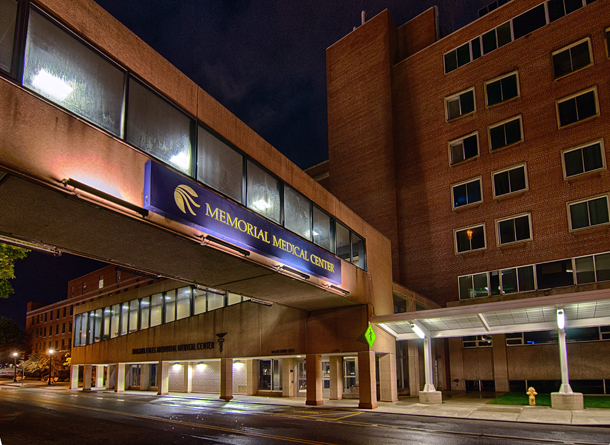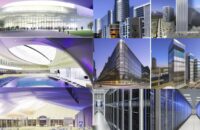I have lived and worked in Western New York for decades now. Many in the area know me from the nearly 30 years I spent at Niagara Mohawk and National Grid (culminating in the position of regional director for Western New York), or from my role on New York State’s Climate Action Council.
I’m currently a consultant to the Niagara Digital Campus, a joint project between Urbacon and Niagara Falls Redevelopment (NFR) to bring a $1.5 billion data center development to downtown Niagara Falls. At NFR’s expense, National Grid recently completed an Engineering Assessment that has concluded that there is electric capacity at this time for the full build out of the Digital Campus (at 140 MWs). The Engineering Study is utility standard operating procedure (SOP) along with a customary Cost Reimbursement Agreement (CRA) outlining the cost NFR and Urbacon would invest to interconnect to National Grid’s transmission system. One final step: to have the New York Independent System Operator (NYISO) perform a “resiliency study” — also at NFR/Urbacon’s expense.
It is clear that electric capacity is available, communication with National Grid and the NYISO is open and positive, and timelines to meet Urbacon’s project timeline are within scope.
I’m a paid consultant, of course, but that’s not why I am doing this. I believe in the benefit the Niagara Digital Campus will bring to residents of Niagara Falls. In the importance of enhancing and leveraging our existing electric capacity. And in spreading the costs of future utility infrastructure investment and maintenance along with climate change initiatives for the betterment of ratepayers, local residents, businesses and the environment. Most of all: I believe in bringing local, high-tech jobs and opportunity to new generations of Niagara Falls residents — opportunity that touches every level of the workforce spectrum.
The Niagara Digital Campus will do all of this. And with the recent announcement that Buffalo, Rochester and Syracuse have been identified as a federally recognized “Tech Hub,” it time for Niagara Falls to take part in this international corridor of technology innovation.
Urbacon could build anywhere, of course. Yet they want to build in Niagara Falls. Why? Three reasons: Climate, power and water.
Niagara Falls is in a cooler, northern climate, so it will cost less money to cool the facility than if it were, say, in Arizona or Nevada. Our very environment is leveraged to meet climate change objectives, since it minimizes use and cost associated with mechanical cooling. Moreover, the Niagara Digital Campus site has access to sufficient electrical capacity, as well as infrastructure that leads right up to the property. Indeed, NFR and Urbacon plan to build a new electrical substation, at their own expense, as part of the project. Given the developers will invest in their own electric system, capacity will not be compromised in the city.
And water? Once again, our environmental assets bring climate change solutions.
But let me explain the broader impact on our community, both in terms of revitalizing existing infrastructure and actually lowering the costs residential ratepayers will pay for electric service.
Projects like the Niagara Digital Campus run 24/7, contributing to future transmission maintenance and climate-related subsidy costs in a manner that lowers the cost paid by others. It has been widely reported that New York’s electric system is aging and in dire need of technical upgrade. There will also be infrastructure requirements associated with meeting New York’s aggressive climate objectives. New York ratepayers — all of us — will be looked upon to pay those costs. Infrastructure and Climate costs are fixed — spread among all ratepayers. Recovery of these costs will come in the form of charges that increase electric bills for all ratepayers.
Yet since the Niagara Digital Campus will pay for its own substation and transmission lines, they will take on a greater share of future system-wide maintenance and electric bill subsidies. This will decrease the contribution other ratepayers have to pay. A business like the Niagara Digital Campus offsets these costs without compromising electric capacity while stoking economic growth and the move toward decarbonization.
Finally, I would point out that it is estimated that, upon full completion, annual electricity charges are expected to exceed $78 million. Sales tax revenues from the project could run into the millions for local governments and the school district.
In the end, I want to see our climate and environmental goals fulfilled here at home—in harmony with economic opportunity, not at its detriment. Current energy policy often results in building far away from where electric demand is—and where there is a lack of infrastructure to move the energy. We need to prioritize economic development, promoting entities that leverage our environment for climate effectiveness, while bringing value to local residents who desperately need jobs and economic fulfillment. Too often, we pay lip service to bringing opportunity and lower rates to communities in need. Rarely do we have a real chance to do so.
The Niagara Digital Campus is that chance. Let’s not waste it.





















